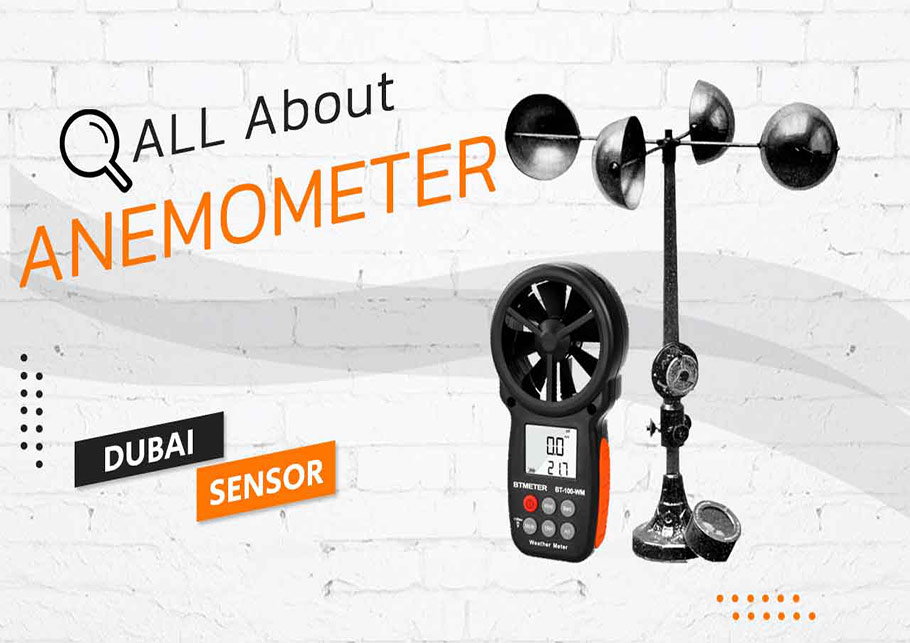Anemometers Unveiled: Understanding Their Importance in Ecological Surveillance and Precaution
The function of anemometers in environmental tracking and safety and security measures is typically ignored, yet their value is obvious. These instruments have a long background rooted in scientific query and technical developments, developing to come to be vital tools in numerous fields. From weather forecasting to aviation security, anemometers play a crucial function in supplying exact data that notifies decision-making processes and boosts overall safety. Comprehending the complexities of anemometers introduces a world of critical insights that are essential to our understanding of the atmosphere and the actions we require to make sure safety and security.
History of Anemometers
The evolution of anemometers can be traced back to the ancient people where rudimentary wind gauging tools were first used. These very early wind measurement tools laid the structure for the growth of extra advanced anemometers over time. One of the earliest known anemometers was the hemispherical cup anemometer designed by Leon Battista Alberti in the 15th century. This layout consisted of four hemispherical mugs that accumulated wind power, giving a dimension of its intensity based on the speed of rotation.
Over the years, developments in modern technology led to the growth of more modern anemometers, including ultrasonic anemometers and laser Doppler anemometers, offering boosted accuracy and performance in measuring wind rate and instructions. The background of anemometers showcases an exceptional journey of technology and development in the field of meteorology.
Sorts Of Anemometers
Throughout the field of meteorology, different kinds of anemometers have been established to accurately determine wind rate and instructions. Sonic anemometers utilize ultrasonic signals to gauge wind rate and direction properly. Hot-wire anemometers operate based on the principle that the cooling result of wind on a warmed cable is symmetrical to the wind speed.
Applications in Weather Forecasting
Having gone over the numerous kinds of anemometers made use of in meteorology for measuring wind speed and instructions, it is important to explore their functional applications in the area. Anemometers play a vital duty in weather forecasting by providing real-time and accurate information on wind conditions (anemometer). Meteorologists use anemometers to monitor wind speed and direction to anticipate weather patterns, problem warnings for severe weather events like hurricanes, tornados, and hurricanes, and analyze climatic conditions for air travel security
In meteorology, anemometers help in understanding regional and neighborhood wind patterns, which are essential for anticipating weather condition changes and establishing climatic fads. These tools are likewise made use of in study to research microclimates, metropolitan heat islands, and air pollution weblink dispersion. Furthermore, anemometers are utilized in agriculture to enhance crop management techniques, such as watering and pesticide application, based upon wind problems.
Relevance in Aeronautics Safety And Security
An important facet of ensuring aeronautics safety and security depends on the meticulous monitoring of wind problems using anemometers. Anemometers play a critical role in aeronautics by providing real-time data on wind rate and direction, helping pilots in making notified choices during trip, take-off, and landing. Strong and uncertain winds can dramatically affect aircraft procedures, making it crucial for air travel authorities to rely upon accurate wind dimensions to make sure the safety and security of passengers and crew.

In the vibrant environment of air travel, where also small modifications in wind rate and direction can have profound results, anemometers stand as vital devices for advertising risk-free and secure air traveling.
Role in Environmental Study
How do anemometers contribute to innovations in environmental research? Anemometers play a crucial function in ecological study by providing vital information on wind speed and direction. This info is essential for understanding different climatic procedures, such as air pollution diffusion, climate patterns, and environment change. By accurately gauging wind features, anemometers aid scientists evaluate the movement of contaminants airborne, examine the impact of commercial emissions, and predict the spread of pollutants in the atmosphere.


Verdict
In verdict, anemometers have actually played a crucial duty in ecological surveillance and safety measures. With a rich background and different kinds available, these gadgets have actually been commonly utilized in weather forecasting, aeronautics safety and security, and ecological research. Comprehending the value of anemometers is important for accurately measuring wind rate and instructions, which is essential for forecasting weather patterns, making certain risk-free air travel procedures, and conducting ecological research studies - anemometer. Their contributions to these areas can not be underestimated.
One of the earliest recognized anemometers was the hemispherical mug anemometer invented by Leon Battista Alberti in the 15th century. Over the years, innovations in innovation led to the growth of even more modern-day anemometers, consisting of ultrasonic anemometers and laser Doppler anemometers, providing enhanced accuracy and efficiency in measuring wind speed and instructions. Hot-wire anemometers operate based on the principle that the cooling effect of wind on a heated cable is proportional to the wind rate. Meteorologists use anemometers to monitor wind speed and instructions to forecast climate patterns, concern warnings Discover More for extreme weather condition events like twisters, tornados, and storms, and examine climatic here are the findings problems for aeronautics safety.
Comprehending the value of anemometers is crucial for properly measuring wind speed and instructions, which is crucial for anticipating climate patterns, guaranteeing risk-free air travel procedures, and conducting environmental researches. (anemometer)